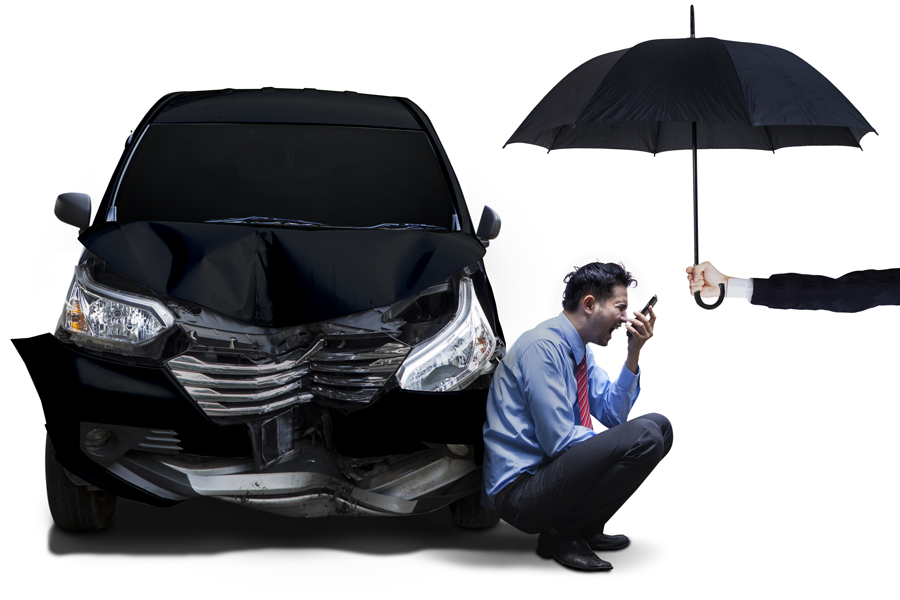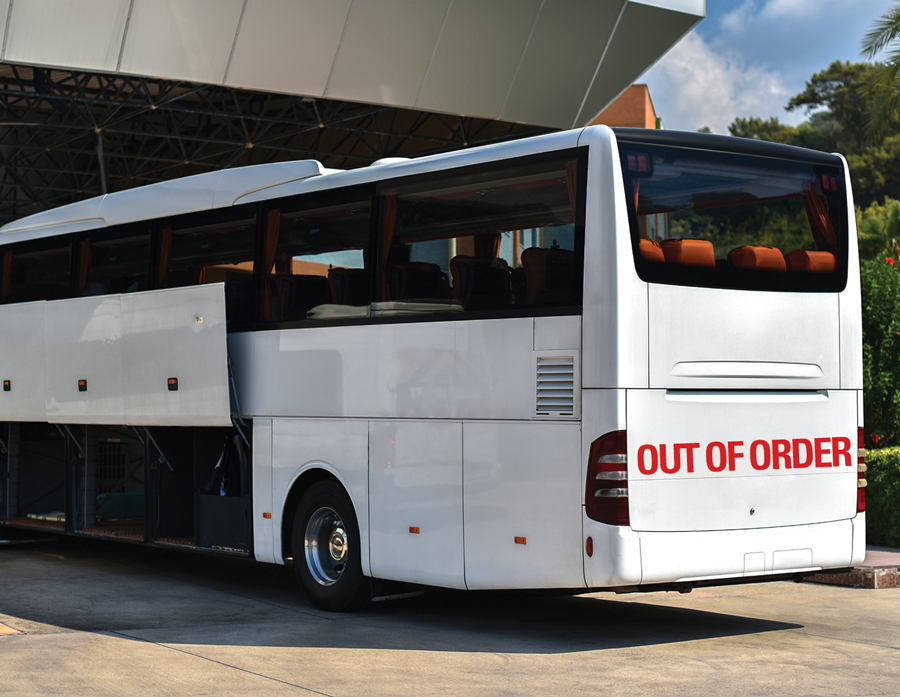Editor’s note: The opinions expressed are those of the author. Always do your due diligence.
Your fleet is likely your most expensive and most worried-about aspect of your business, and the phrase “out of service” is often the stuff of nightmares for your dispatcher or fleet manager, especially if it’s referring to one of your most popular vehicles. Downtime is money lost when it’s "just" a routine maintenance issue—but what can you do when the vehicle is off the road much longer due to an accident?
 What Am I Entitled to From a Not-at-Fault Accident?
What Am I Entitled to From a Not-at-Fault Accident?
Many operators don’t realize or understand what they are allowed to recover from an accident where their chauffeur was not at fault, although getting compensated for an out-of-service vehicle can sometimes be a long and frustrating process. The law supports that the owner is entitled to the use of their “chattel”— a Latin and old French term referring to moveable personal property—and compensation pursuant to the same. With that said, what you are entitled to and what shows up in your mailbox are two drastically different things. It goes without saying that you get what you pay for, and some insurance companies can be motivated to pay the least amount possible (which can often depend upon your relationship with your broker).
There are a lot of factors influencing compensation, but essentially you can attempt to recover your physical damage, cost of transporting the damaged unit, diminution of value, and loss of use/revenue. While driver liability, statute of limitations, and minimum policy limits vary from state to state, typically, the state where the accident happens will determine the applicable laws and regulations.
If I Have an Available Spare Unit, Am I Still Entitled to Loss of Revenue?
The short answer is yes; however, getting the carrier to ink the check is another matter. There are real costs associated with running a spare unit, which is why the law supports loss of revenue as a recoverable item. Acquisition costs, maintenance, licensing, certification, insurance, branding, and storage are all expenditures incurred by having a spare unit.
The following are steps you can take to help maximize recovery:
• Pursue all possible recovery sources. Besides the at-fault party’s insurance, there may be an umbrella policy, a company policy, or personal assets. Driver liability, statute of limitations, and minimum policy limits vary by state. The key is to know the options in your state(s) and then to pursue recovery using the latest industry tools as quickly as possible.
• Follow insurance industry documentation standards. The information you provide needs to be submitted to the third-party driver’s insurance carrier in a format that is "insurance friendly." Knowing insurance industry regulations, standards, and law are key to move the carriers to action. Technically, a carrier can wait 30 days after receiving a demand before taking any action on the claim.
Immediately following the accident, how you proceed is key to getting maximum recovery for your losses. Consider these critical items that will help maximize your recovery:
• Educate and equip fleet drivers with the tools necessary to collect vital information at the scene. This includes a description of the incident, as well as clear color pictures of the scene, any damaged vehicles, and the third-party driver’s license and insurance information. Take as many pics as you can. Alternatively, you can dispatch a team member to the scene if the driver/chauffeur isn’t capable of doing so due to injury.
• Gather as many witnesses as possible and get statements from both drivers, if possible. Get your driver’s statement while it’s still fresh in their mind. • On-board videos are great, but if you don’t have a dash cam, using a smartphone to get video of the damage and intersection can be very helpful if liability is in question. GPS units can also aid in determining liability.
• Get an accurate and thorough estimate. Be aware that, for the most part, insurance companies are meticulous in determining payout. In addition, some adjusters may not be experienced with damage to specialty vehicles or the equipment they may contain. Using a third-party administrator (TPA) with strong commercial fleet experience can provide an arm’s length transaction necessary to be proactive on the front side in setting the claim up properly, which usually results in a higher recovery.
• Supporting income records are critical to loss of revenue recovery. Loss of revenue is the hardest thing to recover and you will hear many objections, such as you need to prove you had no other units. Showing the income that the unit generated prior to the accident in a format that satisfies the insurance company’s needs varies by company, claim, and amount.
• Educate and equip fleet drivers with the tools necessary to collect vital information at the scene. This includes a description of the incident, as well as clear color pictures of the scene, any damaged vehicles, and the third-party driver’s license and insurance information. Take as many pics as you can. Alternatively, you can dispatch a team member to the scene if the driver/chauffeur isn’t capable of doing so due to injury.
• Gather as many witnesses as possible and get statements from both drivers, if possible. Get your driver’s statement while it’s still fresh in their mind. • On-board videos are great, but if you don’t have a dash cam, using a smartphone to get video of the damage and intersection can be very helpful if liability is in question. GPS units can also aid in determining liability.
• Get an accurate and thorough estimate. Be aware that, for the most part, insurance companies are meticulous in determining payout. In addition, some adjusters may not be experienced with damage to specialty vehicles or the equipment they may contain. Using a third-party administrator (TPA) with strong commercial fleet experience can provide an arm’s length transaction necessary to be proactive on the front side in setting the claim up properly, which usually results in a higher recovery.
• Buckle up for a long ride. Even after the carrier has accepted liability, be prepared to follow up via phone calls, emails, and in writing. Unfortunately, this can be a time-consuming process, so patience is imperative.
What Is Diminution of Value?
The second key recovery component is diminution of value (DV), or the loss of market value a vehicle suffers even after it is repaired. The age of the vehicle, miles, condition, and other factors determine this amount. Without a strong recovery plan or TPA, this is often left on the table. The key here is strong data that supports your valuation utilizing multiple sources, or using a firm that has extensive experience and a successful track record for recovering DV.
Getting Accurate Values When a Vehicle Is a “Total Loss”
The term “total loss” is an insurance term without a clear legal definition. Carriers have often used title branding laws to determine if a vehicle falls into that category. While each state has different criteria for branding titles, vehicles can and have been paid as total losses with damage percentages well below the title branding statutes. Carriers often tout statements such as federal guidelines or state statutes when attempting to settle claims; more accurately, legal entitlements are based upon what is called the Restatement of Torts and defined by case law in each state. Property and casualty insurance adjusters don’t always understand these laws, while you may not be aware of these limits.
Now that you know the areas where you can potentially recoup your losses, how can you win at the recovery game? There are essentially three routes for recovering after a not-at -fault accident:
 • Handle the claims yourself. Taking the DIY approach can be effective and feasible, particularly if you are familiar with the law and insurance industry, and are willing to follow up with insurance carriers. If you're interested in what this approach entails, turn to page 56 to read about how Alan Candeub of Park Avenue Limousine has been successfully handling these claims for more than 25 years.
• Handle the claims yourself. Taking the DIY approach can be effective and feasible, particularly if you are familiar with the law and insurance industry, and are willing to follow up with insurance carriers. If you're interested in what this approach entails, turn to page 56 to read about how Alan Candeub of Park Avenue Limousine has been successfully handling these claims for more than 25 years.
• Let your insurance company handle the claim. This is where it pays to have a good relationship with your broker; however, they can only recover what insurer will pay out and is on your policy. Coverage for loss of revenue and DV are rarely in a policy since they are not cost effective. Regardless, this requires patience and organization on your part.
• Hire a TPA to handle the claims for you. They can recover loss of revenue, DV (inherent and repair-related), and other costs typically not recovered, but they will charge a fee to fight on your behalf. If you go this route, select a firm that specializes in loss of recovery and has a long track record, experience with specialty vehicles, adequate technology, and a strong legal department. Make sure their fees are performance-based and that they are not compensated by repair facilities. Using a TPA may level the playing field a bit.
A down vehicle from the result of a not-at-fault accident and the ensuing paperwork and time involved doesn’t have to be a nightmare. By arming yourself with knowledge and/or potentially using a third party to act on your behalf when dealing with your insurance company, you can save yourself some frustration and even recover what your business lost through no fault of your own. [CD0219]
Brian Ludlow is executive vice president for Alternative Claims Management. He is an entrepreneur and consultant to the insurance, financial, and transportation industries. He can be reached at bludlow@altclaim.com.

